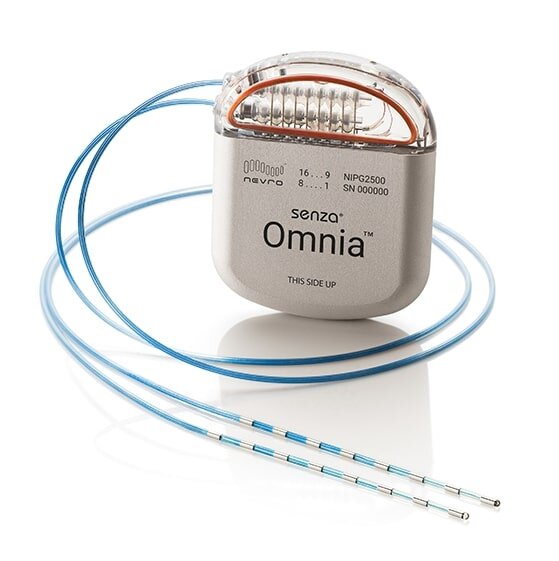FDA Approves Spinal Cord Stimulator for Diabetic Neuropathy
/By Pat Anson, PNN Editor
Like many other people with diabetic neuropathy, Lee Cagle suffered from burning and stinging sensations in his legs – pain so severe that he used sheets at night to build a small tent around his feet so that the fabric didn’t touch his skin and trigger another flare.
The 33-year-old Arkansas man tried pain medications such as hydrocodone and gabapentin (Neurontin), but didn’t like their side effects or potential for addiction.
“I don’t want to get hooked on pain meds. I’ve seen people hooked on pain meds and I didn’t want that for myself,” Cagle told PNN. “I only used them on the worst of worse days, when I could not fall asleep because I was in so much pain.”
Last year Cagle heard about a clinical trial for people with painful diabetic neuropathy (PDN) and decided to take a chance, enrolling in the study to see if a Nevro spinal cord stimulator could relieve his pain. The device emits mild electrical pulses to disrupt pain signals before they reach the brain.
“It was almost instantaneous. The ease of the pain that it gave me,” Cagle said. “I felt so much better.”
The results from his two-week trial were so promising that Cagle agreed to have the stimulator permanently implanted along his spine during an outpatient procedure. That was nine months ago.
“I’m a completely different person now, compared to what I was before I got it put in my back,” said Cagle, who had only one minor setback when one of the electrodes leading from the stimulator failed.
Cagle was one of 113 patients with PDN who had Nevro stimulators implanted during the clinical trial. Several dropped out of the study due to adverse events such as infections and two had their devices removed.
Most of those who remained reported significant pain relief of at least 50% and improved quality of life.
NEVRO IMAGE
The overall results were so promising that the Food and Drug Administration recently approved Nevro’s Senza stimulators for the treatment of PDN, making it the only spinal cord stimulation system approved for that condition. The Senza stimulators are unique because they use high frequency electric pulses of 10 kHz, a frequency that doesn’t create an uncomfortable tingling sensation that’s common with other stimulators.
"The substantial pain relief and improved quality of life demonstrates that 10 kHz Therapy can safely and effectively treat this patient population," said lead investigator Dr. Erika Petersen, Professor of Neurosurgery and Director of Functional and Restorative Neurosurgery at the University of Arkansas for Medical Sciences. "I'm grateful to my co-investigators and the patients who participated in this study, as the results and this approval will have far-reaching impact on the lives of PDN patients."
‘Dangerously Lax’ Oversight
FDA approval of the Nevro stimulator for PDN is a significant expansion of the medical device market. Of the 34 million Americans with diabetes, about one in five have painful neuropathy, a condition that develops when high blood glucose levels damage peripheral nerves. Until now, most spinal cord stimulators were only approved for patients with severe back pain.
FDA approval also comes at a time when the agency is under growing scrutiny for its regulation of medical devices, particularly spinal cord stimulators. A 2020 report by Public Citizen accused the FDA of “dangerously lax” oversight of stimulators, which were linked to 156,000 injuries and 931 deaths. Ironically, the report noted that spinal cord stimulators are often touted as safer alternatives to opioid medication.
“In the midst of the opioid crisis, medical device companies and medical centers that implant spinal cord stimulators increasingly have been marketing spinal cord stimulation as an alternative to opioids for chronic pain,” the report found. “Importantly, no evidence was provided that spinal cord stimulators reduce the use of opioids.”
The FDA responded to the Public Citizen report by sending a letter to healthcare providers reminding physicians to only implant stimulators after a trial period that demonstrates the device provides effective pain relief. An FDA review of adverse events involving spinal cord stimulators found that nearly a third were reports of unsatisfactory pain relief. Even worse, the review identified nearly 500 deaths linked to the devices between 2016 and 2020.
A new study published this week in JAMA Internal Medicine concluded that the FDA’s adverse events reporting system for medical devices may significantly underestimate the number of deaths that actually occur. Researchers found the system relies too heavily on adverse events reported by device manufacturers.
The Center for Medicare Services (CMS) is also taking a harder look at spinal cord stimulators. On July 1, CMS implemented a new rule requiring Medicare patients to get prior authorization before a stimulator is implanted. The agency said there has been significant expansion in the use of spinal cord stimulators – about 50,000 are now implanted every year in the U.S. – but it could find no medical reason to justify the increasing number of procedures.
“After reviewing all available data, we found no evidence suggesting other plausible reasons for the increases, which we believe means financial motivation is the most likely cause," CMS said.
Industry groups and some members of Congress lobbied hard against the CMS rule, saying prior authorization would create “significant barriers to access to medically necessary procedures.”
For patients who are desperate for pain relief, who find medication ineffective or difficult to obtain, spinal cord stimulation may be one of the few options remaining. Asked if he would recommend the Nevro stimulator to other DPN patients, Lee Cagle said he would.
“Definitely. Most definitely. I’m a totally different person now,” he said. “If Nevro came in with something else, if they needed me for a trial study, I wouldn’t hesitate.”




